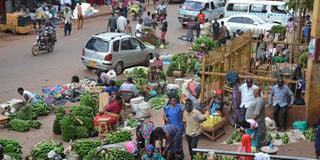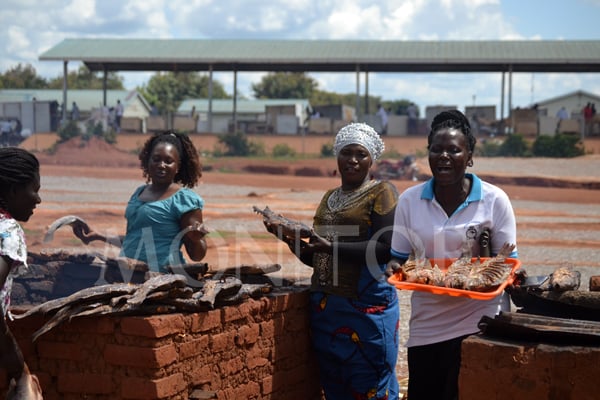Vendors abandon Jinja new market for streets

Vendors operate from the streets of Jinja City on May 24. PHOTO / TAUSI NAKATO
What you need to know:
- The assistant town clerk of Jinja City Southern Division, Mr Moses Mutakisa, on Monday said the facility lacks a proper drainage system and that it has become huge inconvenience to the traders.
Leaders in Jinja City have attributed the increased street vending to wrong design of the Central Market.
The assistant town clerk of Jinja City Southern Division, Mr Moses Mutakisa, on Monday said the facility lacks a proper drainage system and that it has become huge inconvenience to the traders.
“When it rains heavily, the area gets flooded and vendors have to abandon their stalls,’’ he said, adding that inconsistent power supply is also a challenge.
“When power goes off, either during day or night, the facility becomes so dark making it hard for customers to access the various stalls,’’ he added.
Ms Rachael Kyozira, a vendor dealing in clothes, said as stakeholders, they were not involved in the designing process of the market.
“If they had consulted us during the initial designing stage, we would have a modern market that every vendor admires working in,’’ she said.
The chairperson of Jinja Central Market Vendors Association, Mr Henry Mugimba, said the design of the market differs from the approved one.
“When building the market, the contractors changed the designs. For example, the sizes of the stalls were reduced from between 5 metres and 6 metres to between 2 meters and 3 metres. You find that the stalls are too small for the vendors to utilise,’’ he said.
According to Mr Mugimba, at least Shs10m is spent monthly on electricity bills because they are forced to use light during the day.
“We request the government to provide us with solar power. The council gave us a standby generator which can only be managed by a factory because it is expensive to maintain in terms of service fee, which is Shs4m. About 240 litres are needed to run the generator for 24 hours in case of a power black -out’’ he said.
Mr Mugimba said the tax collection in the market has significantly reduced from Shs50m per month to about Shs15m as traders operate from the streets.
“A person who wants to buy tomatoes cannot come to the market when they are by the roadside,’’ he said, adding that vendors, especially those who acquired loans are counting losses.
About the market
The Shs36b market constructed with funding from the African Development Bank (ADB) under the First Phase of the Markets and Agricultural Trade Improvement Programme (MATIP-1) was commissioned by President Museveni on November 17, 2014. The market accommodates s 7,000 vendors.
Under that phase, the government constructed seven modern markets, including Jinja Central Market, with others in Fort Portal, Kampala, Jinja, Hoima, and Mbale among others.




